

Out with the new and in with the old! When self building or renovating, it’s long been the done thing to buy everything brand new. That approach has had its day and now we’re well in the preloved era for many things – clothes, toys… and the same goes for building materials and interior elements.
There are many words banded about in this space: pre-loved, second-hand, antique, recycled; the list goes on. Most of the terms above (aside from recycled) refer to an item that has been previously owned (but not necessarily used), whether that be in recent years or a long time ago. Recycled items (or sometimes just parts of them) are made from materials that have been broken down from their original form and used in a different way (for example, a plastic bottle becomes part of a chair).
In between these terms sits reclaimed, which refers to something reused in its same form (ie a brick) for either a new purpose (taking part of a wall and making it into a pizza oven) or the original purpose (reusing bricks from an original wall to construct a new one).
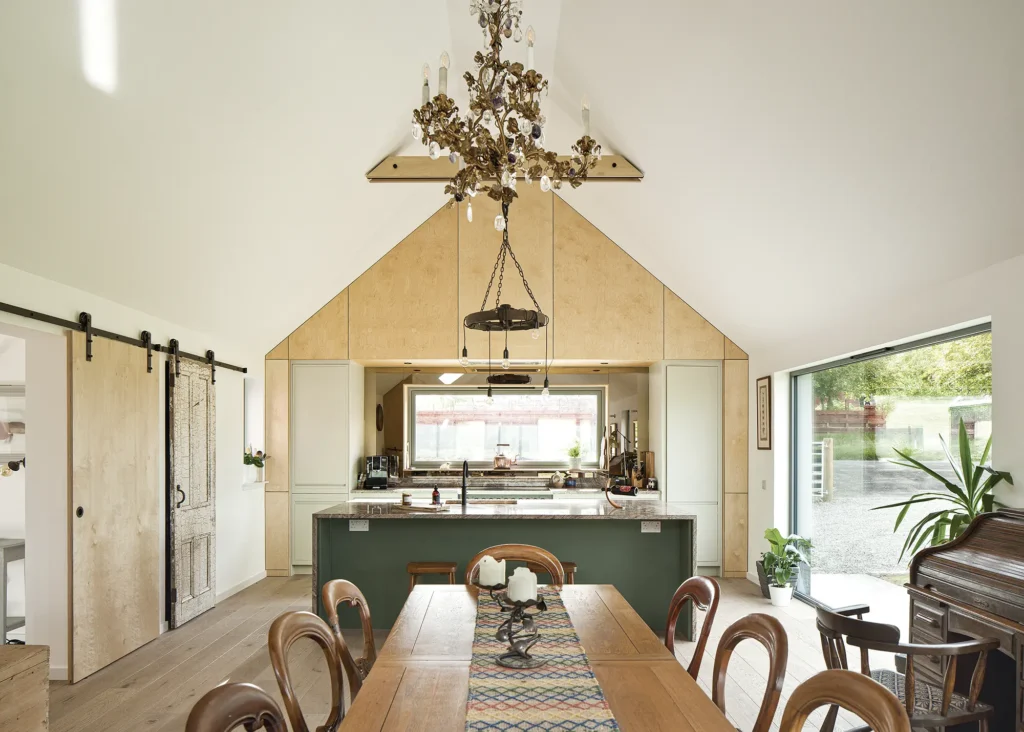
Fiona Henderson worked closely with Fiddes Architects and her contractors to source reclaimed materials for her self build. The kitchen features recycled pine units, old stable doors and striking lighting features. “I found the wheel to create the pendant light over the kitchen island in a field next to my old house,” says Fiona. Photo: David Barbour
Using second-hand materials is more sustainable as energy/carbon is used to produce new things, plus you’re giving extra life to something that would otherwise go to waste. The same is true with recycled or reclaimed materials, although there could be energy used in the production process of turning a material into something else. That said, it’s important to make sure that the items you’re buying really do tick the sustainable box.
There isn’t a hard and fast set of tests for this and sadly there is some greenwash around. However, consumer protection law sets out rules that businesses must abide by when making such claims, which includes making sure statements are truthful, clear, fair, don’t omit certain information, consider the full product lifecycle and are able to be substantiated/backed up by evidence. If businesses don’t comply, they can have proceedings brought against them by trading standards. This is intended to give you more confidence when buying.
In addition, there are a number of labels or certifications that give more specific guarantees that companies can opt into. These aren’t mandatory, so just because a company isn’t signed to them doesn’t mean their claims are false. Some examples of accreditations include:
If you are still unsure, you can often find details on a suppliers’ website or via their customer service team.
CASE STUDY Brighton waste houseOne excellent example of construction focussing on reclaimed and recycled goods is the Brighton Waste House, a project between Brighton University and Architect Duncan Baker Brown. The project set out to prove that undervalued, so-called ‘waste’ material has potential to become a valuable resource and therefore prove that there is no such thing as waste, just stuff in the wrong place. The house was constructed using over 85% waste material, including surprising items like jeans, DVDs and cassettes, slotting them into wall cavities and monitoring them to see how effective they were at insulation in an effort to illustrate the damage of throwing away every day items, and demonstrate an alternate use. |
The lines between second hand and antique are perhaps a little more blurry. As a general rule, antique refers to a product that is over 100 years old, whereas second-hand items are more recent than that. Vintage is a pretty loose term. If we were to timebox this, we might say vintage tends to apply to something 20 years old or more.
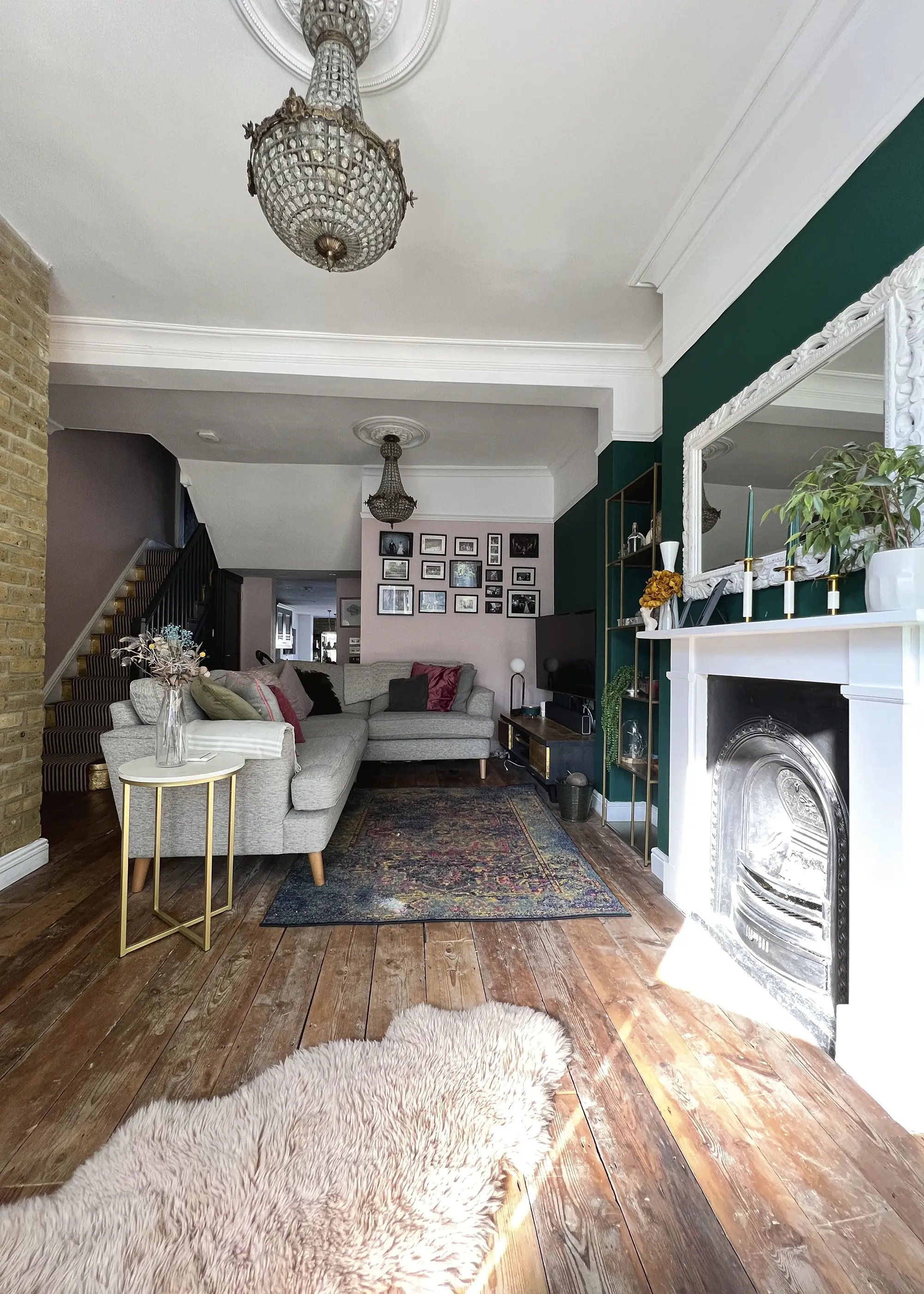
This antique chandelier looks great alongside a heritage fireplace in this stylish, period home renovation
None of these items are better than another. They may, however, be more fitting, depending on the home they are going into, its decor and of course, its period or style. For example, you may have a Victorian terraced house that you wish to decorate in a modern way, but also have a desire to use more sustainable products.
In this instance, you may then opt to look for more recent second-hand products (perhaps at charity shops, car boot sales, on Facebook Marketplace etc) or purchase reclaimed furniture. But if you want to highlight its period status, look for antique furniture or fittings like fireplaces, genuine heritage doors and ironmongery, historic flooring etc.
Making use of old materials in new projects can be cost effective and significantly reduce the carbon emissions in your project. It has the added benefit of helping tie together an original structure with new areas on a renovation project.
Materials that can be reclaimed (ie reused in their original form) include bricks, roof tiles, steel sections and timber, window frames and door handles. Really, the opportunities are endless provided they are the right quality and you can source the quantity that you need. You can also recycle materials, using broken down rubble from any demolition as hardcore or turning old doors into shelves or tables, for example.
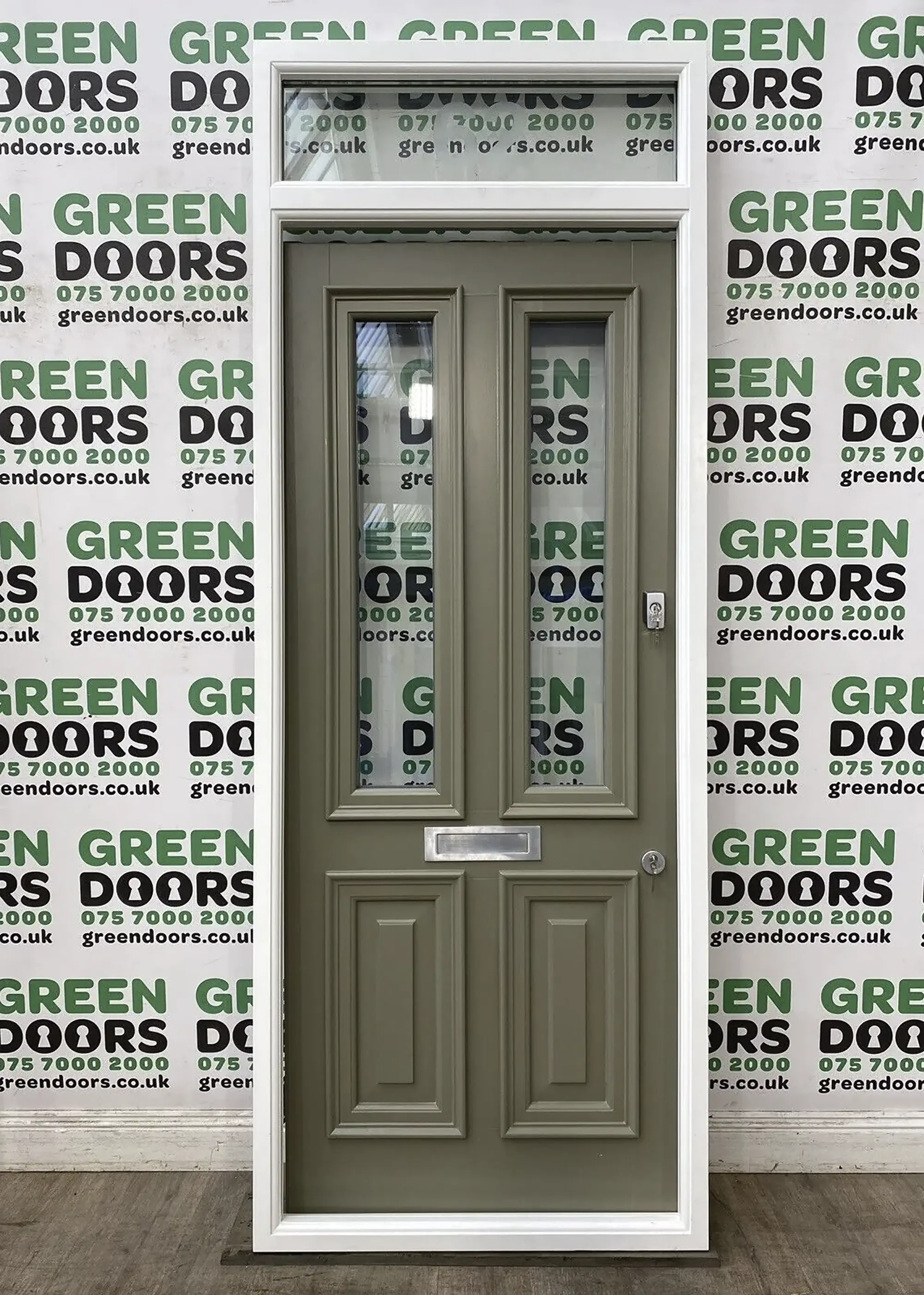
Green Doors started sourcing and selling second -hand products when CEO, Joseph Holma, reused some French doors he found in a skip back in 2014. “Many builders and trades are missing a trick by throwing all waste into skips while there’s a growing upcycle market,” he says
Certain products are available through specialist merchants. For instance, XS Trade offers a marketplace for contractors to resell unused materials (from sheet timber through to plumbing fittings). On a half-step-removed note, Seconds & Co sells Kingspan insulation that didn’t quite meet the factory standards – perhaps due to ripples in the foil facing or a little variance in thickness. It’s not quite reuse (as the products are straight from the production line) but it offers life to something that would have gone to waste.
CLOSER LOOK What can you recycle from your building site?Knock down and rebuild projects are a great way to get a building plot – plus you’ll have lots of materials that could be reused. The same is true if you’re renovating as you’ll be ripping lots of stuff out – but not everything is rubbish. There are many items you can reuse, recycle or indeed sell. Ensure you’ve stipulated in your contract with builders or contractors that anything removed from the property remains yours and they need to confirm with you what can and can’t be taken away as waste. Many things can be reused, from bricks and slate as part of the new structure through to old bathrooms. And if you’re not in the market for an avocado suite, someone else will snap that up and you can pocket the cash to go towards your build. If you have old radiators, they can be sold for scrap metal. Fireplaces might be ripe for reuse. I’ve even seen people carefully remove wall murals and sell those on! So, before any work starts, go around and note down what you would like to try to recycle, always communicating that with builders before you start. |
Building Regulations do not prevent the reuse of reclaimed building materials and architectural salvage, provided the items being used are fit for purpose. Past use can demonstrate that the material is able to perform the function. Reclaimed bricks or slate tiles, for instance, should be passable on this basis, but it can be tricky to validate and it is always helpful to see the material at the source to assess its usability.
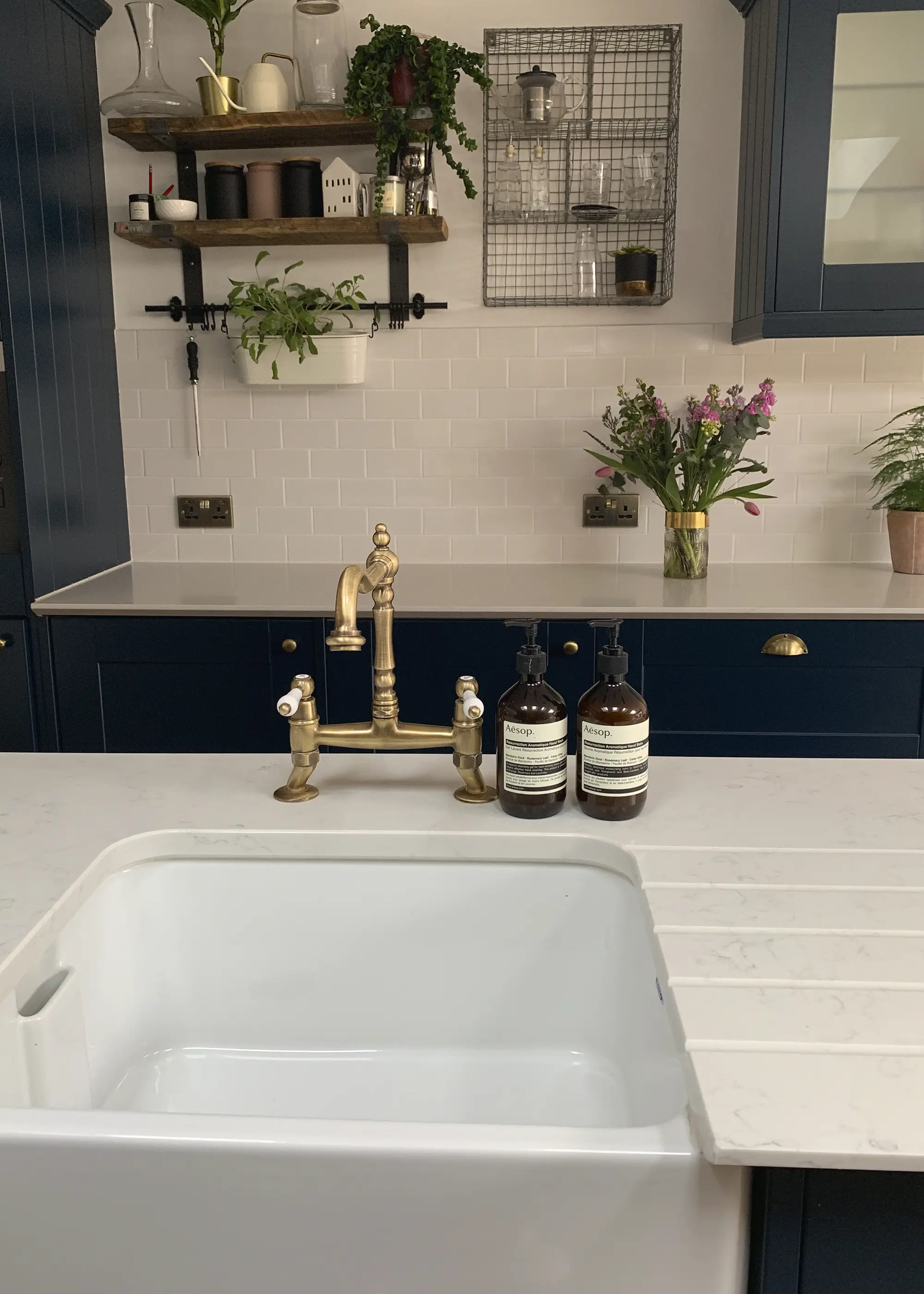
These kitchen shelves were made using reclaimed scaffolding boards – a novel way to recycle leftover materials from the construction process
It’s important to note that your local authority has the right to sample these materials as they see fit. Some items are more demonstrably reusable than others; certain types of door may need a certain level of fire resistance, while beams will need to be of a specific strength to meet structural needs. In addition, though older materials can often be stronger and of a better quality, there isn’t the same ability to provide a guarantee, which can be a challenge for some.
Finding the materials you need can be tricky, which is why reuse isn’t particularly widespread. There are also limitations around the ability to validate the performance of a used material, meaning there could be issues with insurance and liability. At present, there is no mainstream way of tracking resources in the UK.
Other countries have started to implement systems that match need to demand by providing the necessary data about the resource. In the UK, it’s on a much smaller scale and often driven by the homeowner, who may be reusing materials from their own site. Sometimes, architects work with contractors to repurpose surplus materials from previous jobs.
During the later fit-out stages of your project, there are plenty of ways to source items that are recycled or second-hand. You can find many options, from kitchens through to furniture. There are specialist companies, such as The Used Kitchen Company, dealing in second-hand products that have been carefully removed to be sold on. You can find appliances, such as dishwashers, at auction or buy from shops selling returned items from large online retailers. They often sell things that have been refused for delivery, so you can get the same quality item at a fraction of the in-store cost.
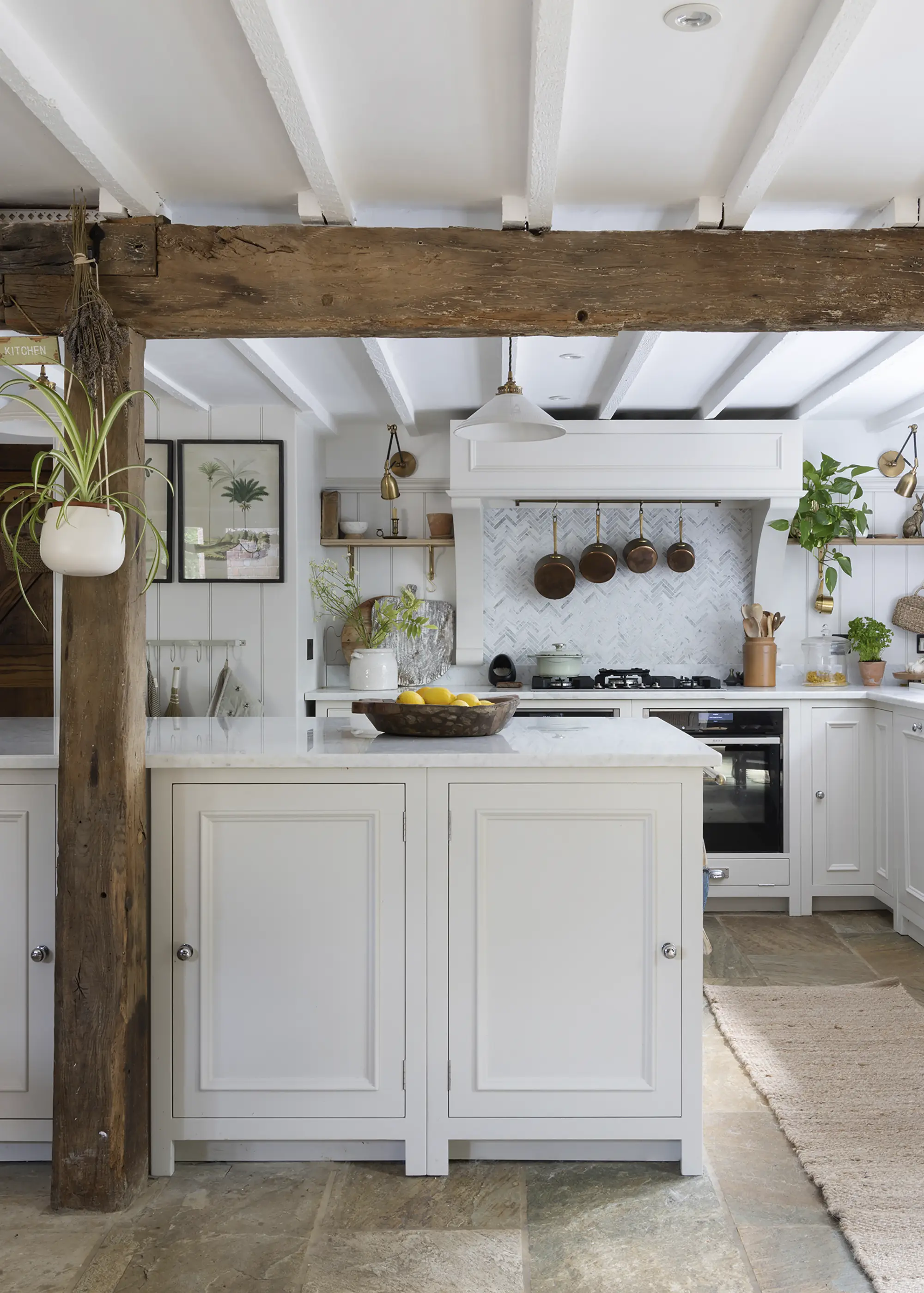
This preloved Neptune kitchen has been reinstalled in its new home and repainted using Neptune Shell paint. All the kitchen cabinetry, appliances, double sink, taps and marble work tops were from Rehome and cost a total of £18,000
Flooring can be expensive and is another key item that you can get second-hand at brilliant prices and often (especially if antique) this can be better quality than buying brand new. You may find flooring in a local builders’ merchants or via restoration companies, but you can easily source such materials on eBay or Facebook Marketplace. The same can be said for fireplaces.
Don’t forget to check your local auctions or antique shops – you may have to dedicate some time to searching through things, but many a gem can be picked up there, from old cast iron radiators and fireplaces that just need stripping, through to decent furniture.
